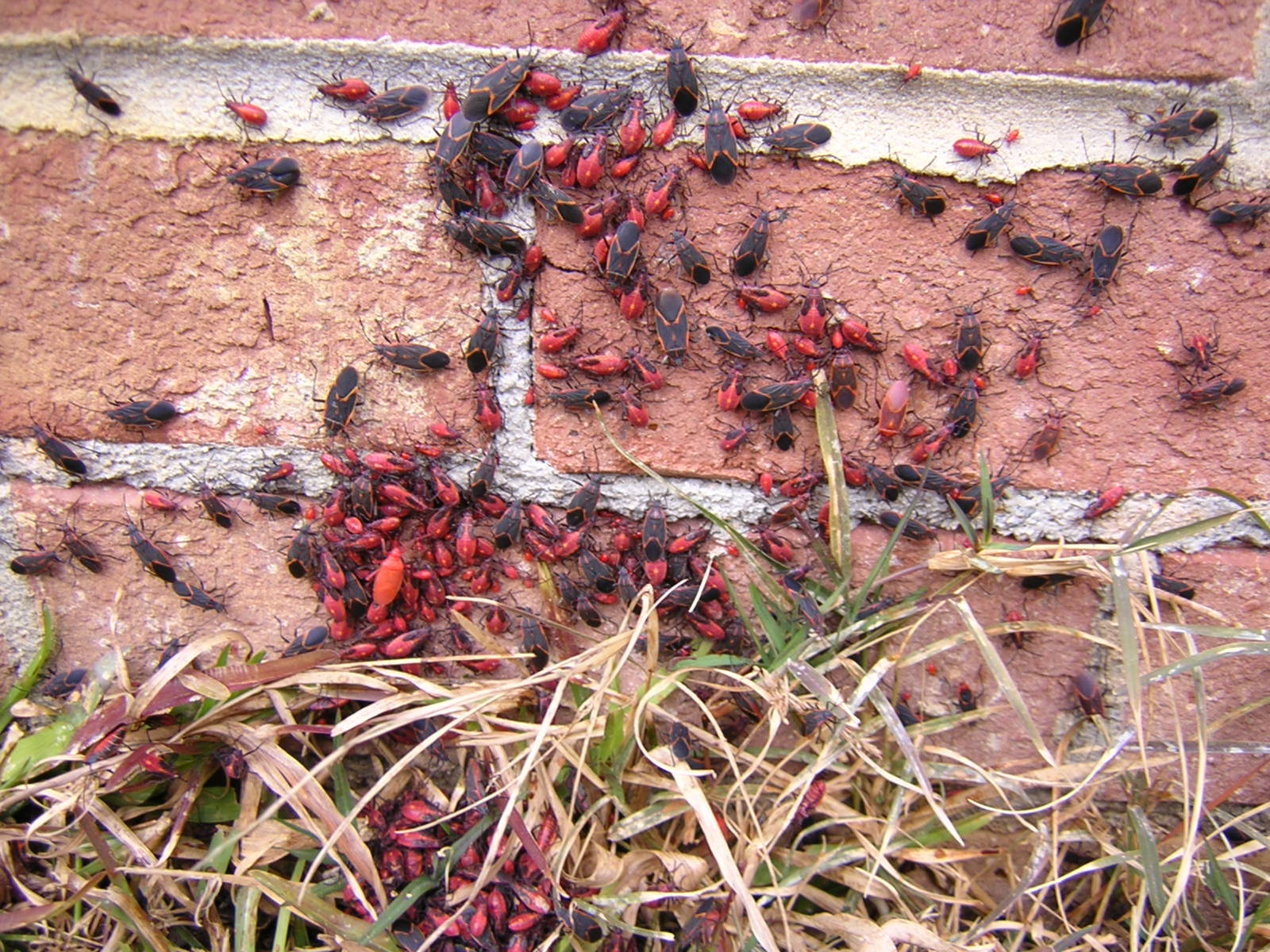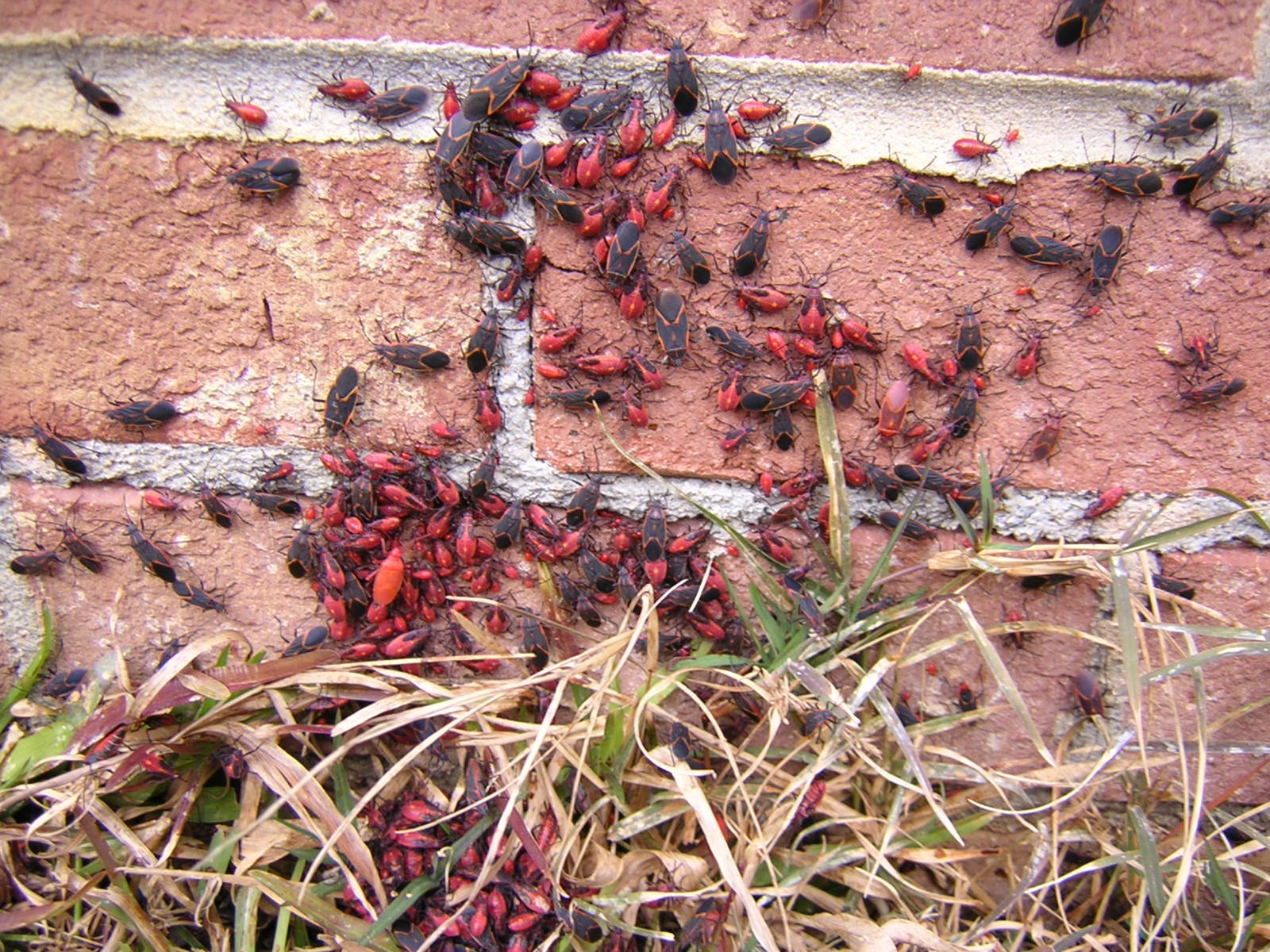Boxelder Bugs Boisea trivittata (Say)

Boxelder Bugs Identification
Color: Black with reddish or orange markings on dorsum
Size: 1/2” (11-14 mm)
Legs: 6
Antennae: Yes
Shape: Elongate-oval, somewhat flattened with head narrower than pronotum
Region: All
What is a Boxelder Bug?
Boxelder bugs get their common name from the fact that they are often found on and around boxelder trees. This black and orange bug is native to the western states, but can be found from eastern Canada throughout the eastern United States, and west to eastern Nevada, wherever boxelder trees are found. Since boxelder bugs don’t bite, they are primarily a nuisance pest. These black and orange bugs enter structures including homes, sheds and garages to overwinter.

What Do Boxelder Bugs Look Like?
If you come across black and orange bugs, you may be seeing boxelder bugs. These types of insects have black with reddish or orange markings on their back in the form of a pattern, adult boxelder bugs have a body shape that is a somewhat-flattened and elongated oval and is about half an inch long. They have six legs and two antennae that are typically half of their body length. Nymphs look similar to adults but lack wings and are bright red in color instead of the familiar black and orange pattern.
Boxelder bugs are not known to bite, but their piercing-sucking mouthparts can occasionally puncture skin, causing a slight irritation and producing a red spot similar to a mosquito bite. This is another reason why it’s best to avoid them.
Overwintering adult boxelder bugs emerge from hibernation in late March to early April when the boxelder buds open. During this time, the adults leave their overwintering sites to return to their host trees for the warmer months. They first feed on fallen boxelder seeds and later move to the female boxelder trees or maple trees where they eat newly developing leaves. Occasionally, these black and orange bugs will feed on the fruits of plum and apple trees.
The females lay clusters of straw-yellow eggs on stones, eaves, grass, shrubs and trees – especially in the bark crevices of boxelder trees. The eggs turn red as the embryos develop and hatch about two weeks later. The nymphs feed on fallen boxelder seeds and later on new leaves. There are two generations per year in the warmer regions of the United States.
In the fall, boxelder bugs become gregarious and congregate on the south side of rocks, trees and buildings where the sun hits. After large masses gather, they migrate to nearby buildings or homes to overwinter. These black and orange bugs tend to hide in small cracks and crevices in walls to insulate themselves from the cold winter temperatures. In late March to early April, adults leave their overwintering sites to return to their host trees for the warmer months.
Inside, boxelder bugs are primarily a nuisance pest, meaning they shouldn’t be considered a threat. This is because they don’t typically intend to bite humans. However, if you notice the distinctive black and orange pattern of these bugs, you should avoid them, as their mouths can irritate your skin like a bite.
Their fecal material can cause a red stain on curtains, drapes, clothing, etc. Like stink bugs, when crushed or handled roughly, boxelder bugs can also produce a strong, disagreeable odor. This is why it is often recommended you contact an exterminator instead of trying to handle an infestation on your own.
Boxelder bugs generally become a problem when they invade homes, sheds and garages in the fall and when they emerge in the spring. Like many overwintering pests, homeowners may see evidence of these bugs as the winter ends and they leave their overwintering site to go back outdoors. Signs of an infestation include red stains on cloth items like curtains or clothing.
Several steps can be taken to prevent boxelder bugs from invading homes. This includes:
- Repairing holes in window and door screens
- Sealing cracks and crevices with a good quality silicone or silicone-latex caulk
- Installing door sweeps to all exterior entrances
The good news is that a boxelder bug is nothing to fear — their presence can simply be a nuisance.
If you do find an infestation of black and orange bugs and need to get them out of your home or other building, be careful of DIY efforts to kill them. No attempt should be made to kill them in wall voids, because dead insect bodies can attract dermestid beetles (larder beetles, carpet beetles, etc). Experts recommend waiting until summer when all live overwintering adults are out of the wall voids. To provide temporary relief during this time, consider using a vacuum cleaner to get rid of the boxelder bugs. The bag should be removed to prevent the bugs from escaping. Then, seal up any entryways into the living space – window pulleys, window and door frames, baseboards, etc. – to prevent a future infestation. For electrical outlets, switch boxes, heating ducts and return air vents, remove the coverplate, seal and replace. For light fixtures and ceiling fans, remove the fixture to its base plate, seal and replace.
If a boxelder bug infestation is suspected, a licensed pest control professional should be contacted to evaluate and assess the problem. Since they can attract other pests, it’s an infestation best to avoid dealing with on your own.
You can find a certified pest professional near you with the helpful zip code search below.




